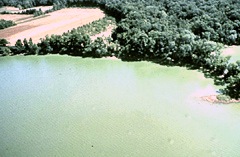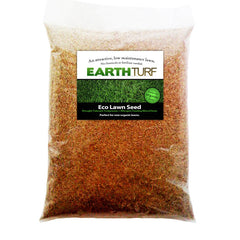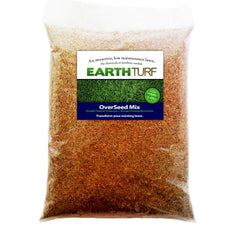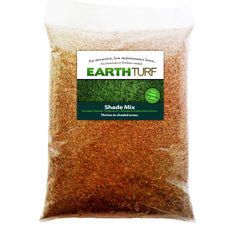Americans apply thousands of tons of nitrogen fertilizer to beautify their lawns every year. This makes for greener landscapes, but comes at the cost of contaminating ground water, is a product of fossil fuels, and is plainly no longer needed.

Unsustainable
Almost all nitrogen fertilizer is made synthetically from methane through the Haber-Bosch industrial process. 70%-90% of fertilizer’s manufacturing cost is from this fossil fuel and is why fertilizer prices fluctuate with gas prices. Over half the nitrogen used in America has to be imported from oil producing countries.
Acute Application
Fertilizer is applied in one-time high doses rather than slowly over time. This leads to the intended plants not absorbing all of the nutrients and fertilizer seeping into the ground water.
Algae Blooms

Nitrogen fertilizers are highly soluble and leach an unnaturally high amount of nitrates into the ground water. Nitrate-enriched groundwater makes its way into lakes, bays and oceans where it accelerates the growth of algae, disrupts the normal functioning of water ecosystems, and kills fish in a process called eutrophication (which may cause water to become cloudy and/or discolored—green, yellow, brown, or red). About half of all the lakes in the United States are now eutrophic, while the number of oceanic dead zones near inhabited coastlines are increasing (wikipedia).
The dead zone in the Gulf of Mexico coming from the mouth of the The Mississippi River is thousands of square miles in size.
Needed For Lawns?
Lawns are mostly maintained and fertilized for purely ornamental purposes. Lawns don’t produce food and or have high utility like sports fields. As the world moves toward more sustainable practices, typical suburban lawns – high maintenance and heavily fertilized – may become a symbols of unnecessary waste and vanity.
Earth Turf is the answer to American’s addiction to high maintenance traditional lawns. With nitrogen fixing MicroClover, Earth Turf can slowly and naturally feed itself and stay attractive without fertilizer and other chemicals – a green lawn without the negative ecological effects.
Learn more —
The Case Against Synthetic Fertilizers, by Deborah K. Rich – Great article on the history of nitrogen fertilizer production and its effects today.
Wikipedia – Fertilizer
Wikipedia – Eutrophication
NASA images of the Gulf of Mexico dead zone.



Question:Is Earth Turf pet friendly? My dogs love to graze on grass.